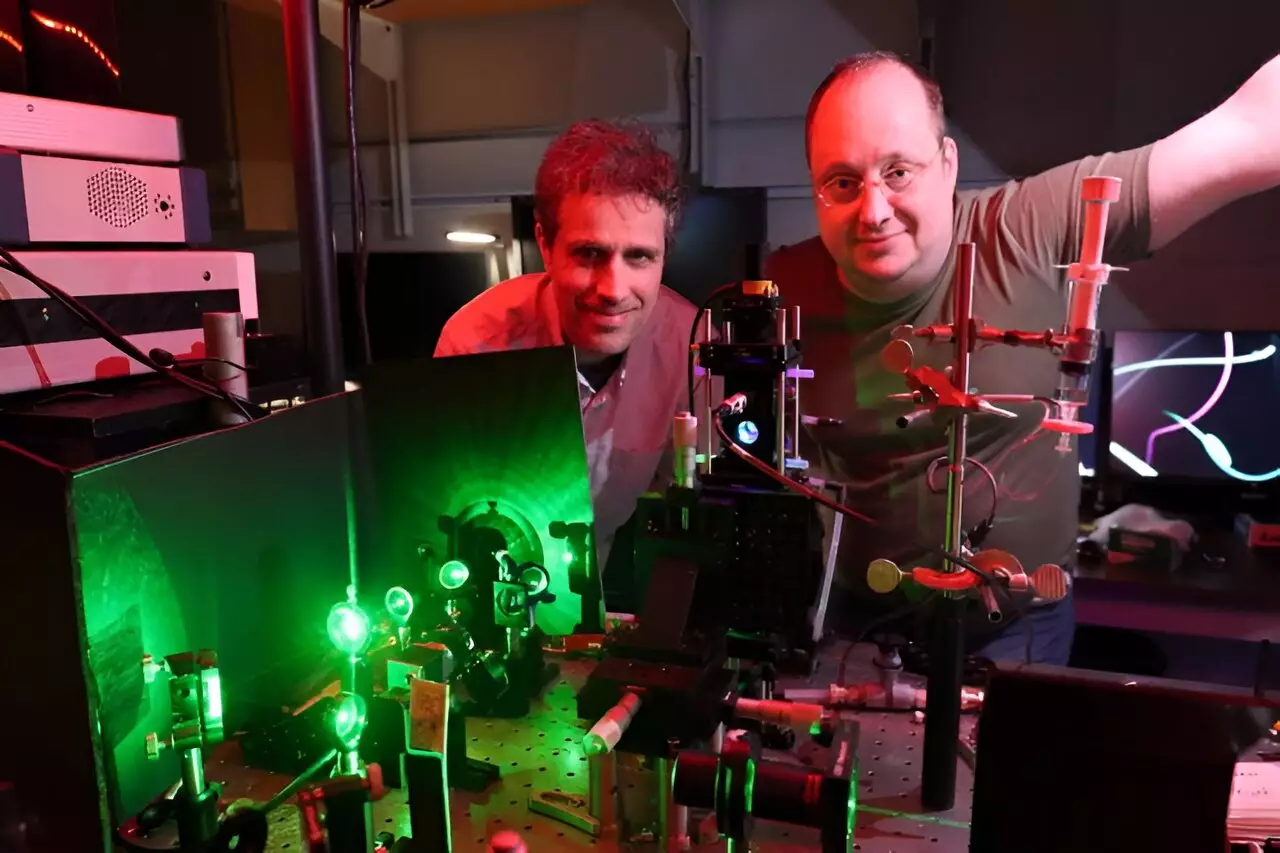A groundbreaking research team, led by chemists at the University of California, Irvine, has made a remarkable discovery surrounding the interaction between light and matter. Their findings have the potential to revolutionize the field of technology, particularly in areas such as solar power systems, light-emitting diodes, and semiconductor lasers. This research, published in the journal ACS Nano, highlights a previously unknown way in which photons can interact with matter on a nanometer scale, particularly in silicon.
Silicon, the second most abundant element on Earth, has long been a key component in modern electronics. However, its use in optoelectronics has been limited due to its poor optical properties. While silicon itself does not naturally emit light, porous and nanostructured forms of silicon have shown the ability to produce detectable light when exposed to visible radiation. This phenomenon has been known to scientists for decades, but the exact mechanisms behind it have remained a topic of debate.
To understand the origins of this fascinating interaction, we must take a trip back to the early 20th century. The discoveries made by physicists such as Arthur Compton and C.V. Raman paved the way for our understanding of light and matter interaction. Compton’s findings regarding the momentum of gamma photons interacting with electrons demonstrated the dual wave-particle nature of light, earning him a Nobel Prize in physics. Raman’s work with visible light led to the discovery of the vibrational Raman effect, a pivotal method of spectroscopic studies now known as Raman scattering.
The research team conducted experiments using silicon glass samples of varying clarity, ranging from amorphous to crystal. By subjecting a 300-nanometer-thick silicon film to a tightly focused continuous-wave laser beam, the scientists were able to observe the formation of a homogenous cross-linked glass in areas with temperatures below 500 degrees Celsius. In contrast, temperatures exceeding 500 degrees Celsius resulted in the creation of a heterogeneous semiconductor glass. This “light-foamed film” allowed for a detailed examination of electronic, optical, and thermal properties on the nanometer scale, challenging existing perceptions of light-matter interaction.
The discovery of photon momentum in disordered silicon, akin to electronic Raman scattering, opens up a new realm of possibilities in optoelectronics. The researchers have uncovered a property of light that may lead to innovative applications beyond traditional optical spectroscopies. By amplifying the interaction between electron and photon momentum, this research sets the stage for structural studies that are intimately linked with photon momentum, potentially reshaping our understanding of light and matter in the field of technology.
The research conducted by the team at the University of California, Irvine represents a significant leap forward in our understanding of light-matter interaction. By unraveling the mysteries of photon momentum in silicon, this study has the potential to drive technological advancements in optoelectronics and beyond, marking a new chapter in the exploration of light’s capabilities.


Leave a Reply